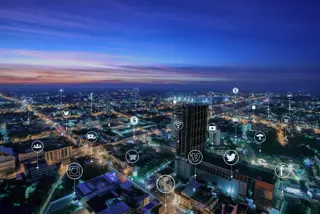Pune's Urban Evolution: Mixed-Use Developments Redefine Modern Living in India's IT Hub

Pune’s real estate landscape is seeing a big change, with mixed-use developments blending residential, retail, and commercial spaces into one. This trend isn’t just about using land better—it’s a response to how people live today, where convenience, accessibility, and smart design come together. As India’s second-largest metro area by planned infrastructure (after Mumbai), Pune’s development shows a national shift towards livable urban planning.
The Growth of Mixed-Use Communities
In the last five years, Pune has seen a 20–30% rise in mixed-use projects, with places like Hinjewadi, Kharadi, Magarpatta, and Baner becoming hotspots. These developments—often with billions of dollars in investment—now make up 25% of India’s $7.8-billion real estate investments (2022 CBRE data). It’s not just about surviving but thriving through integration, every new large residential project (500+ units) now includes commercial spaces and shops to meet residents’ daily needs.
Key Drivers Behind the Demand
1. Convenience as Currency
IT professionals, families, and millennials are looking for communities where living, working, learning, and leisure all come together easily. For example, Hinjewadi’s tech parks drive demand for nearby residential zones with walkable retail. An IT engineer in Hadapsar’s Panchuttar enclave said, “My office is a 10-minute walk away, and shops are downstairs—it’s life simplified.”
2. Investment Magnetism
For developers, mixed-use projects offer two revenue streams: residential sales and commercial leases. Kapil Gandhi of Sigma One Universal notes, “These hubs attract high footfall, making commercial spaces viable and valuable”. With Pune’s arterial road upgrades in Baner, Balewadi, and Mhalunge, scalability has never looked more profitable.
3. Walk-to-Work Revolution
TelecomUTE-friendly policies and metro expansions are reducing long commutes. As Manish Jain of Credai Pune observes: “Buyers now prioritize proximity to malls, IT parks, and transit over secondary amenities”. This mindset is turning traditionally peripheral areas like Wagholi and Nande into premium locations.
Where It’s Happening Fast
| Neighborhood | Key Features | |
|---|---|---|
| Hinjewadi | Maharashtra’s IT Heartland; Direct Metro Link Planned | |
| Kharadi | Riverside charm near Pune-Ahmednagar Highway | |
| Hadapsar | Established industrial area transitioning to mixed-use hubs | |
| Baner-Balewadi | Pike Highway connectivity; Road expansions underway | |
| Mhalunge | Upcoming 1M sqft developments; Future-ready infrastructure |
Financial Considerations: Buy vs. Lease
Unlike rental market trends elsewhere, Pune’s mixed-use developments see stronger purchaser demand, with EMIs nearly matching rental costs. JLL data reveals:
- 2BHK Rental: ₹45,000–₹60,000/month
- 3BHK Rental: ₹60,000–₹90,000/month
- Purchase Appeal: Investors find EMIs competitive, boosting ownership rates.
Expert Insights on Future Trends
Tejraj Patil of Tejraj Group warns that success depends on “carefully separating residential and commercial zones.” His projects in Baner and Shankarsheth Road use layered zoning to avoid chaos. As NNIDRAI details for Pune’s transit-oriented development (TOD) zones solidify, stakeholders anticipate tighter regulation to preserve urban balance.
The Road Ahead
With residents increasingly viewing mixed-use living as an aspirational asset, Pune’s skyline will likely feature vertically stacked communities and hyperlocal commercial nodes. The challenge Maintaining green spaces and cultural character amid densification. As Credai Pune’s Manish Jain concludes: “Done right, these projects don’t just sell homes—they build entire ecosystems that flourish for decades.”